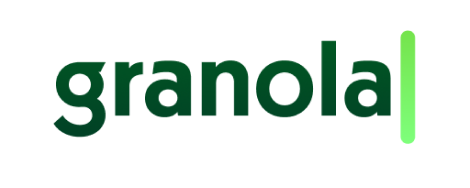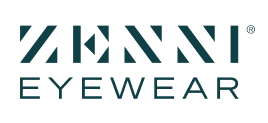Free Now launched in 2009 as the world’s first taxi app to offer a direct connection between passenger and driver. It has grown to 16 countries worldwide and after a number of mergers, it has become Europe’s leading multi-mobility provider and the fastest growing ride hailer in Latin America. Today, 50 million passengers across more than 150 cities use its app for booking rides, car-sharing trips, e-scooters and e-bikes.

Of course, that success didn’t happen overnight – or without hard work. Free Now baked agility into the bones of its organisation and continues to look for ways to streamline its processes and improve collaboration.
Up until 2014, employees used Skype for workplace communication, and it had become an administrative nightmare. Carsten Wolfram, Free Now’s senior systems engineer, debuted Slack as the company’s new communication platform, ushering in faster, more organised collaboration across teams. What he didn’t expect was how essential Slack would become to nearly every aspect of Free Now’s business.
Slack is where Free Now shares to-the-minute company news and updates, and everyone is encouraged to join the conversation. The leadership team is accessible and open to suggestions, which fosters innovation and employee satisfaction. And, with all their most-used apps integrated right into Slack, everyone can work quickly and effectively.
Here’s a look at how Slack helps Free Now do its best work and create a culture where all voices are heard.
Apps make it easy to get work done
One of Free Now’s company values is transparency, and Slack helps promote it. Free Now has created dedicated Slack channels – virtual spaces for sharing messages, tools and files – for everything from company announcements to incident alerts.
If an incident happens, such as an outage on Free Now’s app or website, an automated message is sent to its company announcement channel, #announcements, where all employees can see it. Nothing is handled in secret, which promotes transparency and keeps everyone informed. The on-call tech team is also notified, and members discuss and resolve the problem right in the channel.
‘I can’t remember a time when we weren’t using Slack to resolve issues. It’s the basis for our communication, and having all the relevant people in the one channel makes it easy to share the right information very quickly,’ Wolfram says.
According to Jörg Baldzer, Free Now’s IT infrastructure lead, integrating the IT teams’ apps and processes into Slack was the obvious next step.
‘Slack is where the majority of our internal communications take place, so they were familiar with the interface. We also wanted to create something that would allow all employees to work remotely in the future,’ Baldzer says.
All of Free Now’s developers use Jira for project management, and having it available in Slack helps them stay on top of any issues that might occur.
‘If your ticket status changes in Jira, it will send you an email about it, but that’s really inconvenient. Statuses change all the time, every minute, so you have to keep checking a flooded inbox,’ Wolfram says.
With the Jira app, the dev team gets those notifications directly in Slack, so they can stay on task and resolve issues faster.
In fact, Free Now can now use all its most vital software tools in-channel via Slack apps for Confluence Cloud, Workday, Google Drive, Zoom, Miro, Envoy and Robin. People can work, collaborate, hold meetings and share files without ever leaving Slack, which has supercharged efficiency. App integration has also helped the company to significantly speed up its internal approval processes.
Wolfram and his team have gone beyond out-of-the-box apps; they create their own. Their custom A/V Slack app, for example, streamlines the process of requesting a Zoom webinar. Free Now hosts dozens of webinars every month and until recently, the A/V team had to create each one manually, which was a major drain on the team’s time.
These days, anyone can call up the A/V Slack app with a slash command and enter the details of their proposed webinar. Their request is routed into the private #av channel, where the app checks if there’s a concurrent webinar taking place. If there’s not, a webinar link is created automatically.
‘The user gets their Zoom link and everyone’s happy. It saves a ton of manual work and also reduces human error, which is just amazing,’ Wolfram says.

All the apps that we have in Slack not only save us time but they change how we approach our work – it just flows better now.
Slack keeps work flowing, and everyone can join the conversation
Free Now’s mission is to make it easier for passengers and drivers to move through cities. It’s no small task and one that requires close collaboration across dispersed teams and time zones. With Slack channels, Free Now employees have a central place to collaborate and everyone can join the conversation.

For Izzie O’Keeffe, the office manager at Free Now’s Barcelona office, that was a welcome change from working in more traditional companies with a rigid hierarchy. Those companies had used chat apps on a limited basis, but email was still the main way to contact the leadership team. That didn’t allow for transparent, open communication and decisions could take weeks to finalise.
‘Going from that to having Slack was mind-blowing to me. When I started at Free Now, Slack allowed me to really reach out to people, ask for what I wanted and talk with senior leaders without worrying that I was intruding on their time,’ O’Keeffe says.
Sarah Sellner, Free Now’s Senior Communications Manager, agrees that if you want something to get seen, you put it in Slack. She makes all her high-priority employee announcements in Slack channels and uses Slack’s message activity feature to see how many people view and interact with them.

I feel like Slack has helped us to get to the heartbeat of the employees. This is where it’s all happening. Emails are not nearly as enticing; if we sent announcements by email, we wouldn’t get half the engagement.
Since Covid-19 hit, Free Now has relied on Slack to keep its remote employees connected to one another and to the company. From workout tips to requests for pet pictures, the internal communications team keeps coming up with fresh ideas to boost morale. Individual staff members have joined in, posting companywide questions and polls of their own.

Staff onboarding and offboarding takes place in Slack too. Free Now’s HR and IT departments rely on a private Slack channel to share progress notes and preparations for an employee’s arrival or exit.
‘It makes the communication between the two departments extremely easy, especially for remote onboarding,’ Baldzer says.
Once new hires start, they are invited to join a Slack channel. O’Keeffe, for example, has created the #bcn-newstarters channel for the Barcelona team. She introduces them there, adds some background notes, and their new colleagues welcome them in the thread. She also uses the channel to keep checking in with them every week.
‘Keeping that constant contact is very important; it’s very different from being in the office where you’d see them all the time. Slack allows us to replicate that experience as closely as possible,’ O’Keeffe says.
Being able to reach out to the leadership team through Slack was a huge shift for me, and it’s great. It tells people that the bosses are just right here in the mix with us.
With Slack, help is always right at hand
Free Now has help channels for every department, such as #ask-accounting, #ask-people and #ask-IT. It also created Pal, a custom Slack app that answers common HR questions – users simply submit their query for an instant, automated response. For more complex enquiries, a member of the team will jump in and assist.
The automation that Slack allows is incredible, and it frees us up to concentrate on the work that matters.
Employees are also encouraged to help each other. Free Now has recently launched employee resource groups (ERGs) to give employees with similar identities and their allies a way to connect. Each group has its own Slack channel, such as #women-community, #parents-community, #black-community, #LGBTQ-community and #mental-health-community, where members can speak openly about all topics.

Bringing outside partners into the loop with Slack Connect
Free Now works closely with many outside organisations, including software development companies and marketing agencies. Before Slack, teams used email to communicate with external partners, which made fast decisions and true cooperation difficult.
‘When we sent out an email, our best hope was that we’d get a reply in a couple of hours,’ Wolfram says.
With Slack Connect, Free Now has securely extended Slack’s channel-based messaging to people outside the organisation. It can now collaborate with external partners across Slack workspaces, so it’s much easier to get work done in real time. The company currently uses Slack Connect with 40 partner organisations, and it has plans to add even more.
‘Our partners can add people from their side, so it’s a lot more flexible than simply inviting them to be guests in one of our channels. And we’re not drowning in endless email threads of status updates and newsletters anymore.’ Wolfram says.
Email communication still exists. I guess it will never die, but using Slack Connect to collaborate with our partners is so much better.
Free Now encourages agility and resilience in its teams; when change happens, they are primed to adapt. ‘Take the fast lane’ is one of the company’s core operating principles, and Sellner says that Slack is key to achieving it. ‘What we’ve created isn’t your typical corporate environment, and Slack is a big part of that,’ she says. ‘We don’t just wait around for endless emails to come in. We can take the lead, send our CEO a Slack message and know that we’re going to get a response.’















